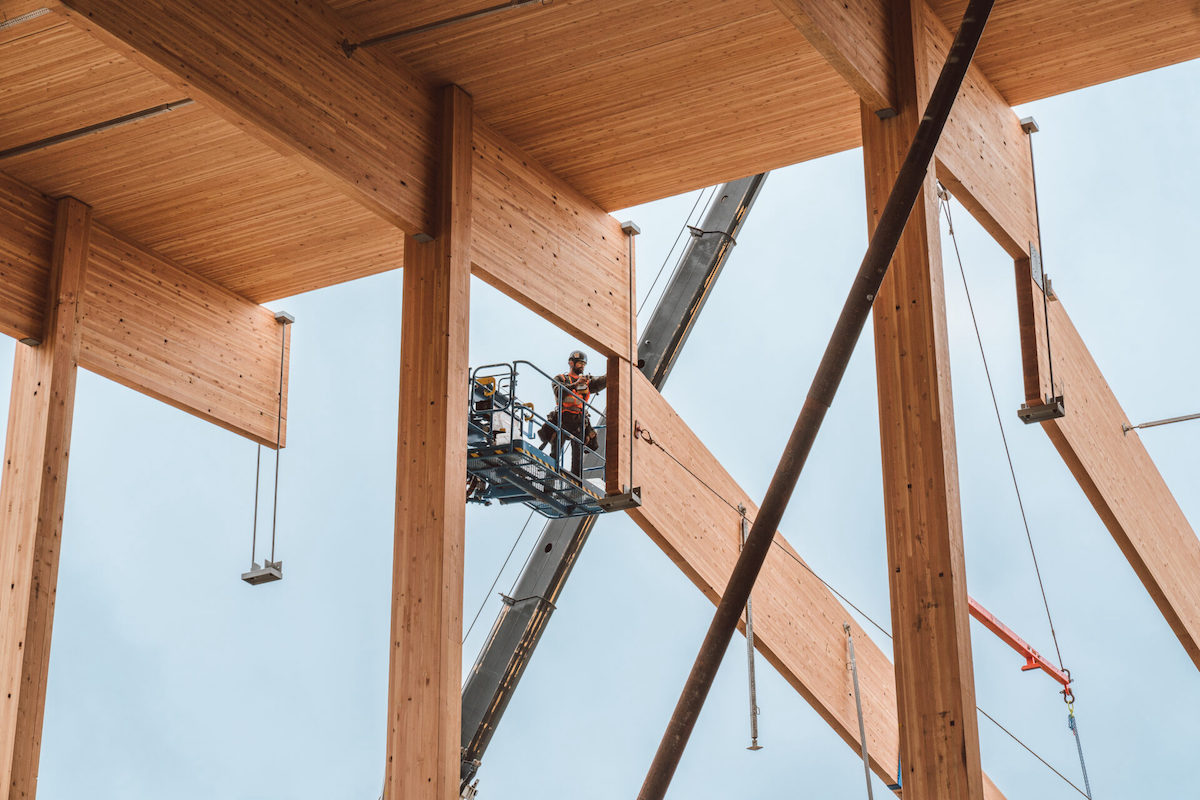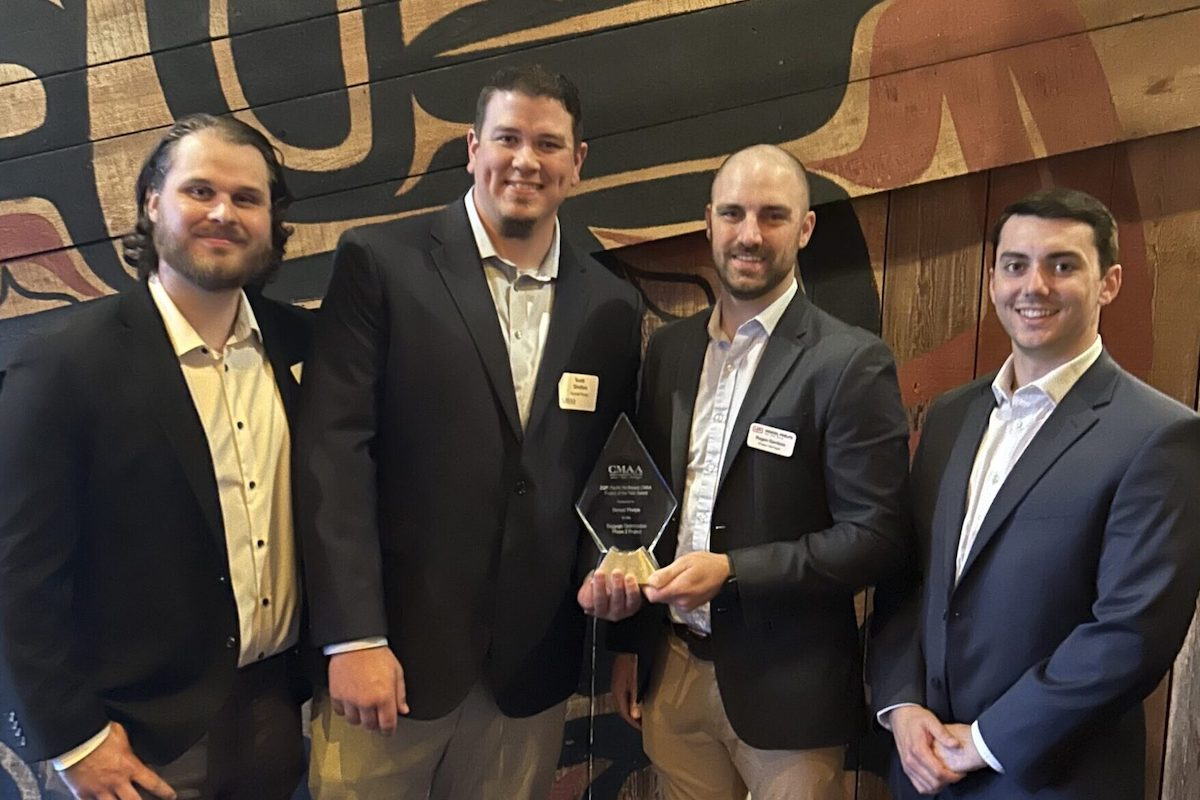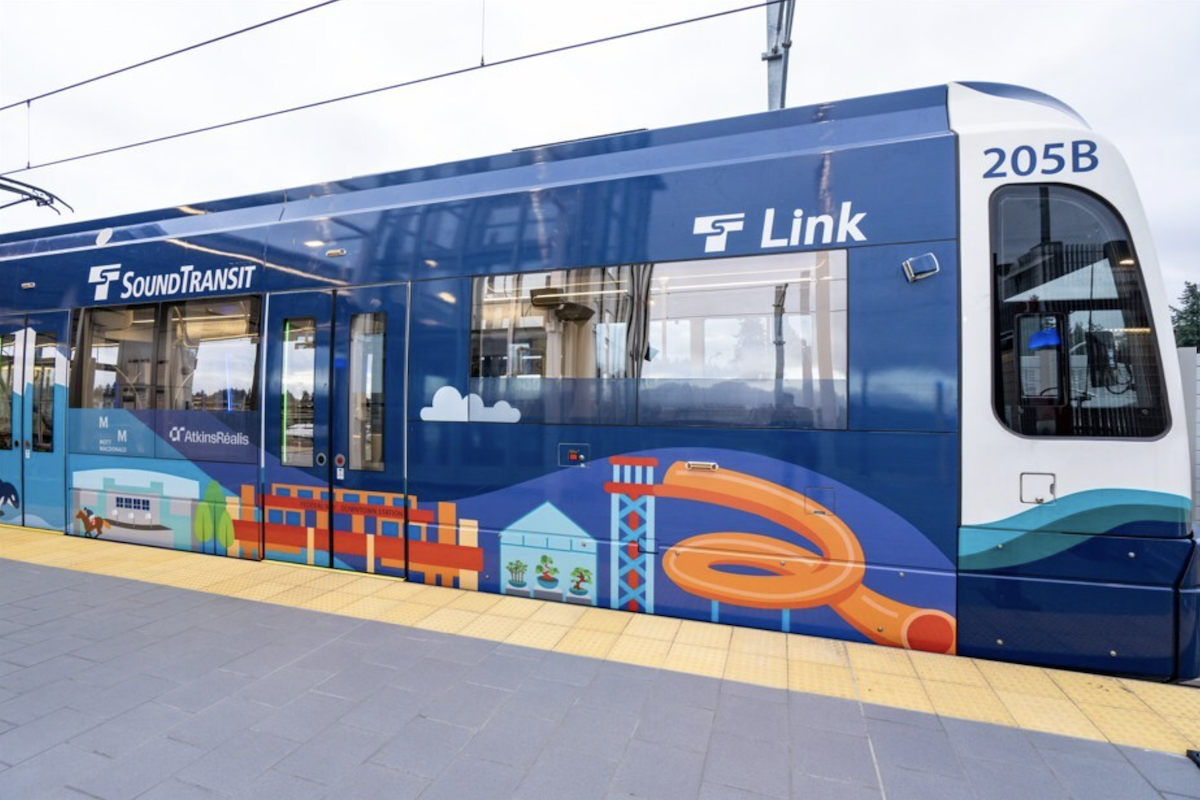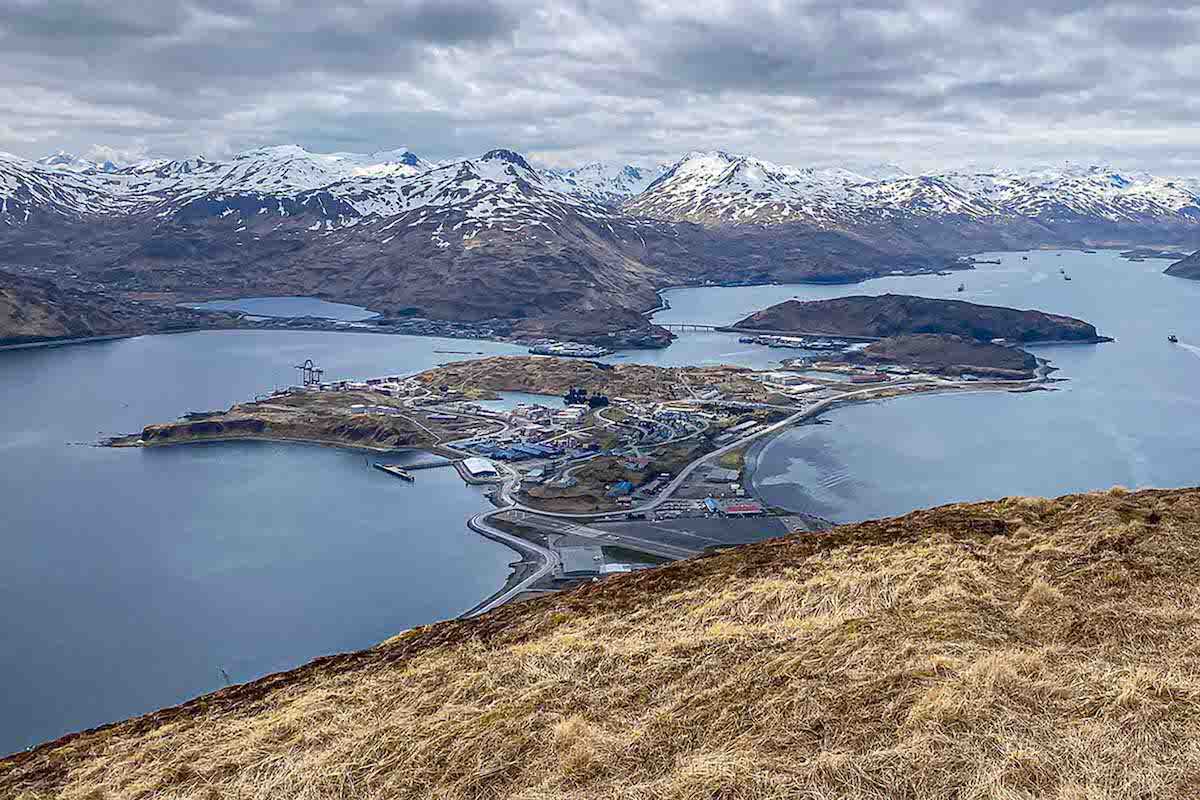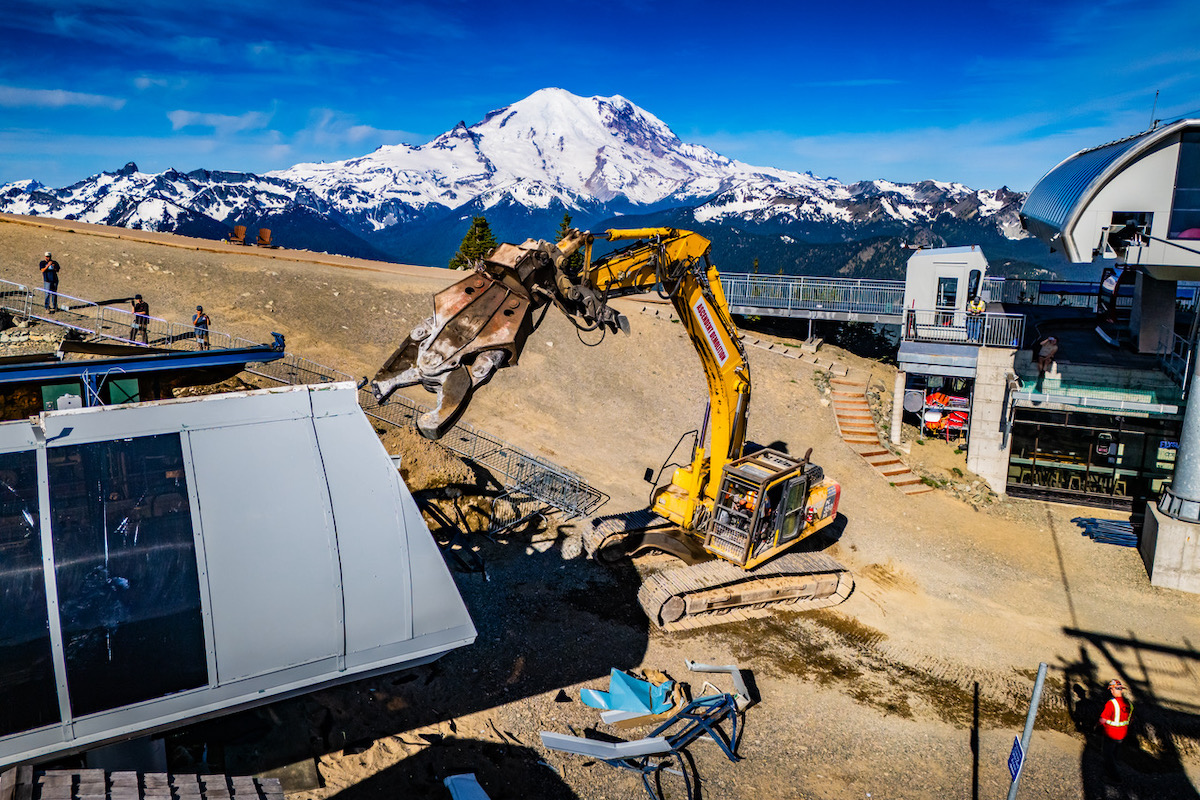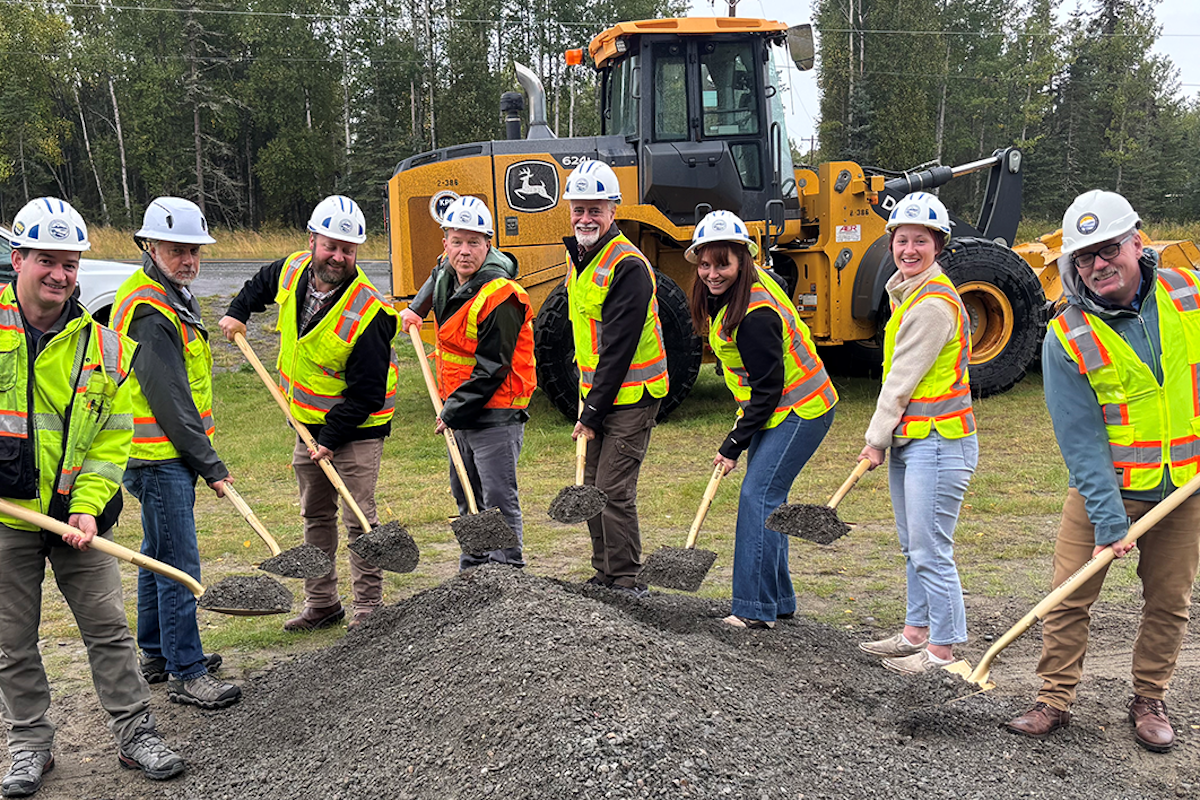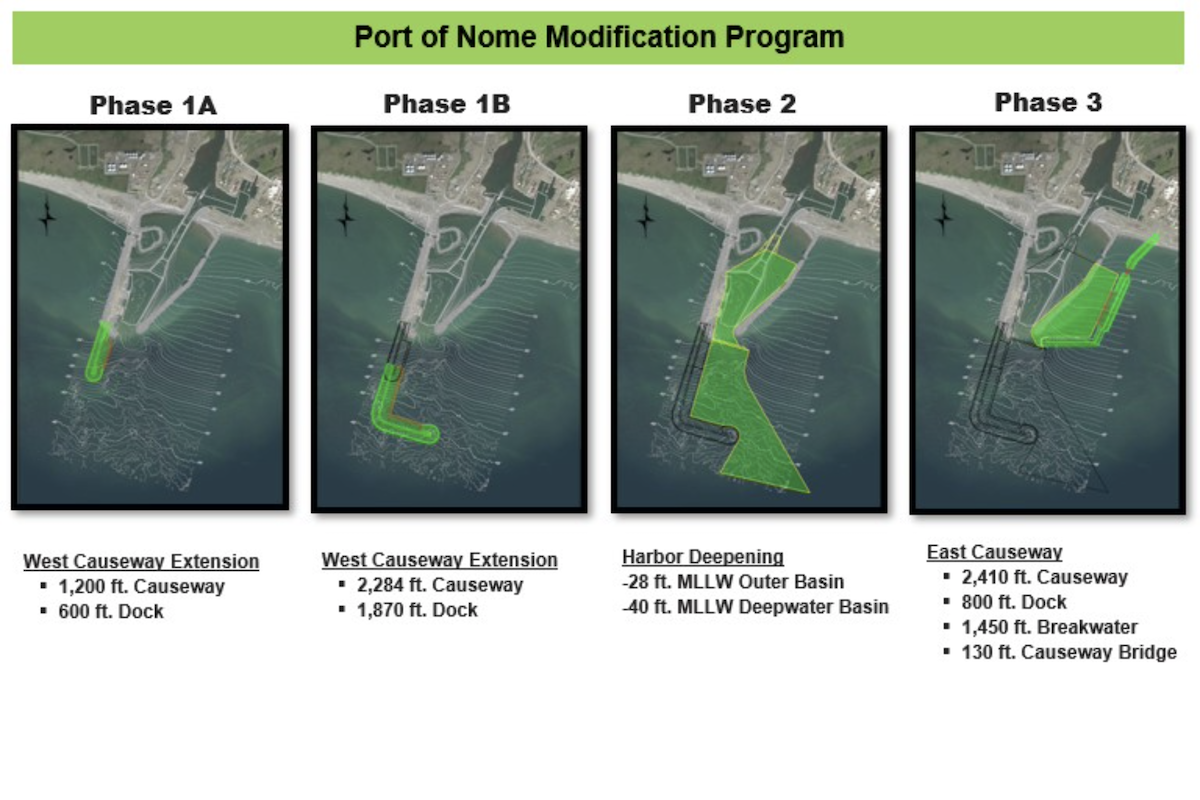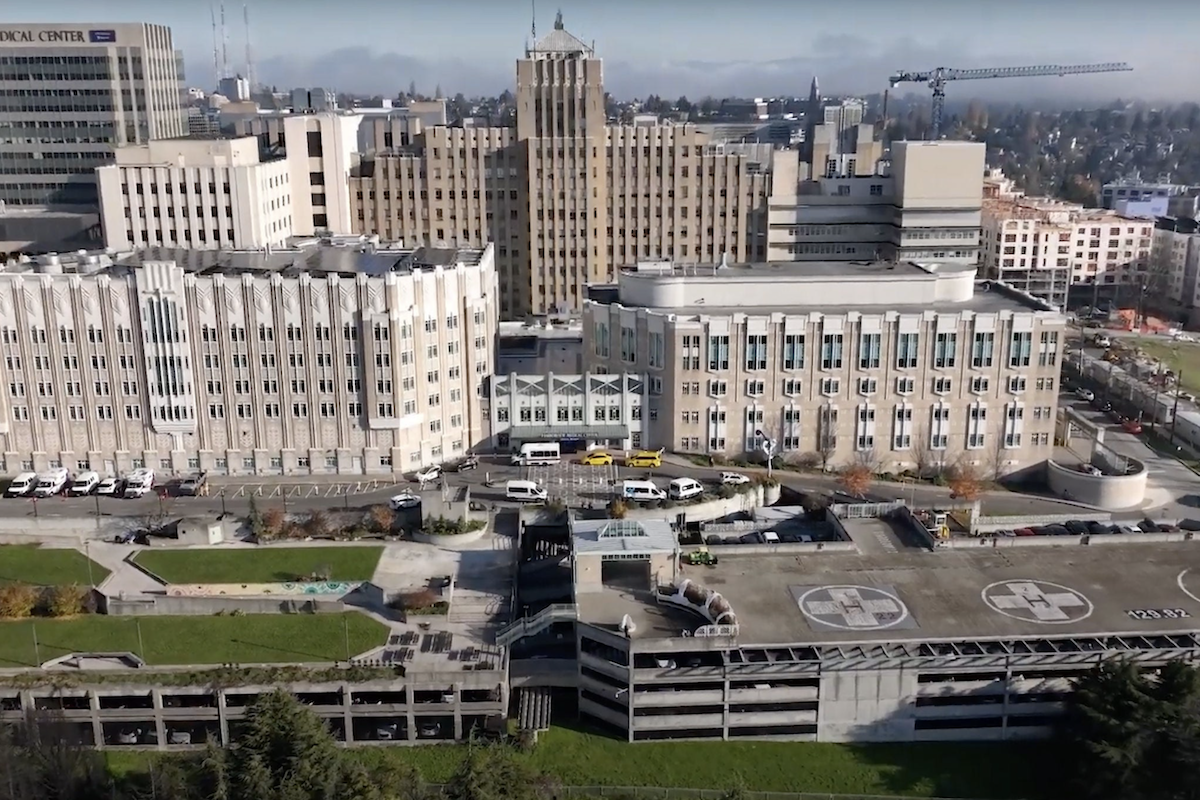However, “The biggest challenge is traffic management,” said Juan Ruiz, J.D. Abrams’ Project Manager. “Williams Drive is the center of Georgetown, so there’s a lot of usage from all directions.”
To reconstruct the bridge over I-35 as a diverging diamond interchange (DDI) amid all that traffic, “Crews demolished and reconstructed portions of the Williams Drive bridge in phases,” said Brandon Thompson, Project Manager for the Texas Department of Transportation (TxDOT). “This was done to ensure two lanes of east/west traffic could be maintained throughout construction activities and users could still access either direction of Williams Drive.”
With approximately 138,000 vehicles traveling on this segment of I-35 each day, the project also includes frontage road improvements and new bypass lanes to reduce backups.
The I-35 at Williams Drive project is part of TxDOT’s Mobility35 Capital Area program. Designed to reduce congestion and travel-time delays caused by population and employment growth in Williamson, Travis, and Hays counties, the program will eventually improve 79 miles of the 50-year-old interstate. As funding becomes available, TxDOT proceeds with projects to increase mobility and connectivity for all modes of transportation – cars, transit, trucks, emergency vehicles, pedestrians, and bicycles – along and across I-35. Eighteen projects have been completed in the program so far.

| Your local Gomaco dealer |
|---|
| American Construction Supply |
| Tri-State Truck & Equipment Inc |
“The DDI design was ultimately selected because it improved safety and mobility,” Thompson said. “Installing a DDI reduces the number of conflict points for drivers. In addition, a DDI design handles a higher volume of left-turning vehicles in comparison to traditional intersections, which is consistent with this project’s purpose to address increased turning movements. Finally, implementing a DDI at Williams Drive offered the fewest right-of-way impacts.”
This is the region’s third DDI along I-35. In 2016, TxDOT completed construction on a DDI at I-35 and RM 1431 and in 2022 at I-35 and Parmer Lane.
To further enhance mobility, the I-35 at Williams Drive project improves the existing southbound I-35 frontage road, extends the northbound I-35 frontage road from Williams Drive to the Lakeway Drive exit, improves bicycle and pedestrian accommodations along the frontage roads, and adds intersection bypass lanes under Williams Drive that allow drivers to avoid the traffic signal.
After TxDOT awarded the project’s low-bid contract to J.D. Abrams, construction started in October 2020. Weather permitting, the project will finish on schedule in late 2023.
In each overnight operation, “We were only allowed a certain amount of time,” Ruiz said. “We had to get that portion of the bridge demoed out, clean up, then open to traffic by the next morning. The phasing of the work has really been a challenge.”
To achieve the accelerated timeline, J.D. Abrams brought in extra crew members from their other projects around central Texas. A total of 15 to 20 people worked on each demolition operation, with many of those handling traffic control to close then reopen I-35 and nearby side streets.
“Typically when we brought in extra resources, since we did one side of the freeway per night, those people stayed with us for two shifts then went back to their regular projects,” Ruiz said.
This year as the construction team began building the replacement structure to accommodate the DDI, crews grappled with tight access and small work areas.
With the large number of resources required to maintain the schedule, “We split the crews so half work in the day and half at night,” Ruiz said. “We’ve been working 24 hours a day since January 2023. The more people you put in an area, the more inefficient it becomes, so it’s safer for us to do it this way.”
Project-wide, Ruiz estimated at least 40 pieces of equipment. That includes two track cranes – a 110-ton Link-Belt 218 and 80-ton Link-Belt 138 – and two 50-ton articulated cranes.
In addition, “We typically have onsite three excavators, five loaders, two bulldozers, two motor graders, two rollers, three water trucks, two telehandlers, two manlifts, six light plants, and eight truck-mounted attenuators for traffic handling,” he said. “Then we have about 12 trailers to haul out material and equipment.”
For retaining walls, J.D. Abrams’ subcontractor brought in a boring machine to install special temporary shoring.
“They bore into the embankment to make room for soil nails and use those to reinforce it,” Ruiz said. “On the face of it, they do shotcrete to protect the vertical cuts, which range from 20 to 25 feet.”
For materials, TxDOT prioritized the use of regional sources. “All our aggregates, concrete, and asphalt are made here locally,” Ruiz said.
Whenever excavation exposes a karst feature, “TxDOT monitors it for about a month to make sure there are no protected species occupying that space before we can proceed to fix it with backfill,” Ruiz said.
During bridge replacement in spring 2023, crews discovered the largest karst feature to date, stretching down 40 feet underground.
“We had a 50-foot radius around the karst feature that had to be monitored for a month,” Ruiz said. “Luckily, it was right outside the bridge so we could continue building, but we had limited movement as we stayed away from that area.”
Karst features are only one of the project’s unexpected challenges.
“The I-35 at Williams Drive project was launched in the middle of the COVID pandemic and has done well to manage supply chain shortages and delayed resources to keep moving forward,” Thompson said. “Outside of the pandemic, crews continued to maintain the project schedule during the extreme snowstorm and large rainfall events we experienced in the past couple of years.”
Through the remainder of 2023, crews will complete reconstruction of the Williams Drive bridge, including the final traffic swap to the new DDI configuration, construction of northbound and southbound I-35 bypass lanes, and final paving and striping throughout the project corridor.
Two other Williamson County projects in the Mobility35 Capital Area program – the RM 620 Roundabout (I-35 to Deep Wood Drive) and I-35 at U.S. 79 – are also scheduled for completion this year, contributing to decreased congestion and shorter travel times throughout the area.
General Contractor – J.D. Abrams, Austin, Texas; Juan Ruiz, Project Manager; Will Byerly and Marcio Matute, Superintendents
Photos courtesy of TxDOT and Juan Ruiz, J.D. Abrams




















